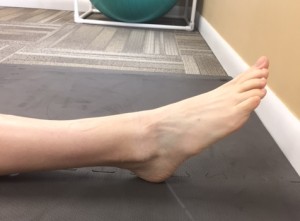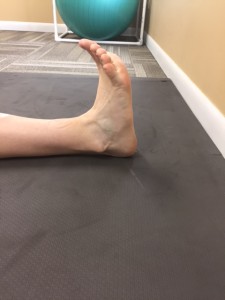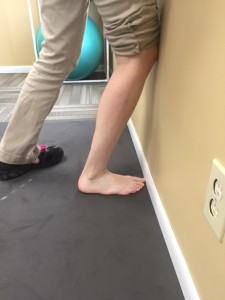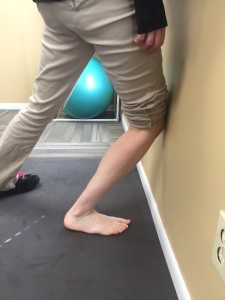 Injury prevention is important to all athletics but especially in our youth today. Youth activities and athletics have exploded in the past 10-15 years and with that increased ability to participate in those sports, comes increased chances for injury. A common injury and over looked area for stability /injury prevention is the ankle. Problems in your ankle can lead to an injury but also abnormal movement patterns that can lead to other issues in your joints and muscles on your knees, hips and lower backs. Think of your ankles and feet as the foundation of your house, if there is something wrong with the foundation, doesn’t it eventually affect the windows and walls.
Injury prevention is important to all athletics but especially in our youth today. Youth activities and athletics have exploded in the past 10-15 years and with that increased ability to participate in those sports, comes increased chances for injury. A common injury and over looked area for stability /injury prevention is the ankle. Problems in your ankle can lead to an injury but also abnormal movement patterns that can lead to other issues in your joints and muscles on your knees, hips and lower backs. Think of your ankles and feet as the foundation of your house, if there is something wrong with the foundation, doesn’t it eventually affect the windows and walls.
The ankles is where the tibia and fibula meet the talus of your ankle. They are responsible for creating a stable base and helping to stabilize your weight and force for the next movement. Our bodies does this without having to think about it so we move with learned movement patterns. When the patterns become abnormal due to injury, decreased mobility or instability, we than start to develop other issues that will work up the kinetic chain to your knee, hips, and/or low back. Having good ankle mobility/stability, you can improve performance in any sport or activity. You need proper motion and then good stability to have better performance. Ankle range of motion includes dorsi-flexion, plantar-flexion, inversion, and eversion. When the ankle is involved, different injuries and changes can occur that chiropractic and exercise and therapy can help. Loss of your arch or previous ankle sprains affect the ankle joint and overall the stability of your ankles.
The following are a few screens that we use and that you can do at home to check your ankle functional range of motion.
Lying down (non-weighted): When lying down on back, stretch your legs out. Relax and then try to point your toes of your left foot. You should be able to go almost parallel when point your toes. This demonstrates a good plantar-flexion range of motion in the ankle.

Now, from the toe pointed position, try to bring your toes up towards your knee or head. You should be able to go beyond a right or 90 degree angle. This should not be painful but may be tight. Repeat this on the right side.
Standing(weighted)-When standing, find a wall and face it. Place the toes of the left foot against the wall, then bend your knee to touch the wall. Your heel must be down and touching the ground.
This should be easy. If you can not do this, we know that you have limited dorsi flexion of your ankles and this affects bending, walking and all movement. If you can do this, try moving your foot out an inch and repeat the process. If you can keep moving your foot and leg away from the wall and then touch your knee to the wall, you have good dorsi flexion. 2- 4 inches knee movement past your knee, with your heel down is what you are looking for.
We also look at multiple factors in the foot alignment, the standing and sitting arch movement of the foot and what muscles are weaker or stronger in the different positions of the foot. Correction can be made with adjustments, exercise (mobility and stability exercises), and muscle work. The first thing we look at is the range of motion or mobility. Our next blog post will talk about what exercises and how we go through a system of steps to regain proper mobility and stability to help injury, prevent injury and increase performance.
However, if you do have limited plantar or dorsi flexion in the ankle, try to just repeat these screens as they are good easy mobility exercises in themselves.
Here at Fletcher Chiropractic, our staff and doctors take the time to educate our clients on how to reduce pain and injury but also excel in performance. Remember to see a professional if you have any injury or questions. We are here to help so give us a call.
